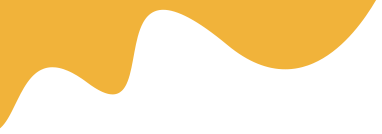Nesting arranges designs to minimize empty spaces on the film, reducing waste and allowing more prints per sheet, which lowers costs.


Nesting arranges designs to minimize empty spaces on the film, reducing waste and allowing more prints per sheet, which lowers costs.
Direct-to-Film (DTF) printing has become a go-to method for custom apparel due to its versatility and quality. One key aspect that can significantly impact your efficiency and costs is the design of gang sheets. A gang sheet is essentially a single sheet of PET film where multiple designs are arranged and printed together. This approach maximizes the use of materials, saves time, and reduces waste. In this article, we'll explore how to design efficient DTF gang sheets, including practical tips and recommended tools to get you started.
In DTF printing, designs are printed onto a transparent PET film using specialized inks. Instead of printing one design per sheet, gang sheets allow you to group several designs onto one film. This is similar to how printers optimize paper usage by fitting multiple images on a page.
The importance of efficient gang sheets cannot be overstated. They help minimize film and ink consumption, which directly affects your bottom line. For small businesses or hobbyists, this means more prints per roll of film, leading to cost savings. Additionally, well-designed gang sheets streamline the production process, making it easier to manage multiple orders at once.
Without proper planning, you might end up with wasted space on the film, uneven powder application, or designs that don't transfer well. By mastering gang sheet design, you can achieve consistent, high-quality results while optimizing resources.
To create effective gang sheets, follow these foundational principles:
Here’s a practical guide to designing your gang sheets:
Remember, efficiency comes with practice. Start with simple layouts and gradually incorporate more complex arrangements as you gain confidence.
Several tools can make the process easier and more precise:
Investing in the right tools not only saves time but also improves the quality of your final prints.
Even experienced users can slip up. Here are pitfalls to watch out for:
By avoiding these, you'll produce gang sheets that are both efficient and effective.
Once you're comfortable with basics, try these advanced strategies:
These techniques can scale your operation from hobby to professional level.
Designing efficient DTF gang sheets is a skill that enhances your overall printing workflow. By following these tips and utilizing the right tools, you can reduce waste, save time, and produce stunning custom apparel. Experiment with different layouts and software to find what works best for your needs. With practice, you'll master this essential aspect of DTF printing.
A DTF gang sheet is a single PET film containing multiple arranged designs printed together to optimize material usage and efficiency in the printing process.
Read MoreBeginners can start with free tools like Inkscape or GIMP for layout, combined with RIP software like AcroRIP for print management.
Read MoreLeave about 0.5 to 1 inch between designs to prevent ink bleeding and allow easy cutting without compromising the transfers.
Read MoreYes, by printing multiple designs at once, gang sheets reduce the number of print runs, speeding up production and workflow.
Read More
